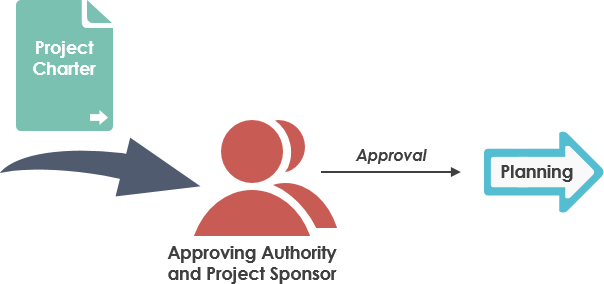The Initiation phase of the IT Project Management Lifecycle involves the assignment of project manager, who are responsible for managing and completing the project on behalf of the project sponsor. The project manager will then define the overall project scope and develop the project charter, which formally authorizes the existence of project.
A quick walk-through

The Initiation phase begins when the project proposal developed in the Identification phase is approved. The first thing that will happen in the Initiation phase is the assignment of project manager. The performing organization appoints a Project Manager to lead the project team and manage the project. He or she will develop the project charter, which is a document that formally establish the existence of the project and the value it hopes to deliver to the organization. The project charter document will then be approved by the approving authority and project sponsor. Their approval formally empowers the project manager to expend resources on the project and continue with the planning phase of the project.
Activities and deliverables
The table below lists the major activities of this phase and the deliverables (i.e. process documents) output from the activities.
| Activity | Description | Deliverable |
|---|---|---|
| Assign Project Manager | Assign a project manager to lead to team in completing the project | |
| Revise Project Complexity Assessment | The project manager will revise the project complexity assessment performed in the previous phase. Unlike what was done before, part of this activity involves the selection of project management scheme, which determines the activities to be conducted in subsequence phases | Project Complexity Assessment (Updated) |
| Develop Project Charter | The project manager will develop the project charter document | Project Charter |
| Approve Project Charter | The project charter will be reviewed and approved by the approving authority and project sponsor. |
Assign Project Manager
A project manager is an individual who are responsible for managing and completing the project on behalf of the project sponsor. In order to carry on, it is imperative that a project manager is assigned at the beginning of this phase.
Listed below are some of the major responsibilities of a project manager:
- Lead the team to complete a project, from its initiation to closeout.
- Staff the project team. Develop and maintain a list of roles and responsibilities for the members of the project team - both the internal team members and key stakeholders.
- Ensure that resources are allocated and utilized in an efficient manner.
- Develop, in conjunction with the Project Sponsor, a definition of the project.
- Develop project plans based on the inputs from project stakeholders. Execute or facilitate the execution of the plans. (Planning activities will be performed in the next phase.)
- Define how to manage risks, then follow the processes defined to identify and analyze risks.
- As part of the management effort, Project Manager has to ensure that the project can be delivered on time, to budget and to the required quality standard.
- Develop status reports on regular basis to update stakeholders on how projects are progressing.
These are just some of the many typical responsibilities of a project manager. The actual responsibilities vary depending on specific project needs.
Revise Project Complexity Assessment
Project complexity is one of the three major components of the IT Project Management Framework. It helps determine the management activities to be performed throughout the project lifecycle.
In the previous phase, the Identification phase, the project sponsor performed an initial complexity assessment by completing the project complexity questionnaire, which helps the project sponsors realize the project's scale and identify some of the high level project risks. In this phase, the questionnaire is revisited by the project manager, by updating the answers based on the latest project status. When finished, a decision of project management scheme has to be made.
The result of completing the project complexity questionnaire is a complexity score which determines the classification of project complexity, namely "Basic", "Low," "Medium," or "High". Each of these four levels of project complexity correspond to a specific project management scheme. The activities and deliverables required to complete throughout the project are controlled by selection of scheme.
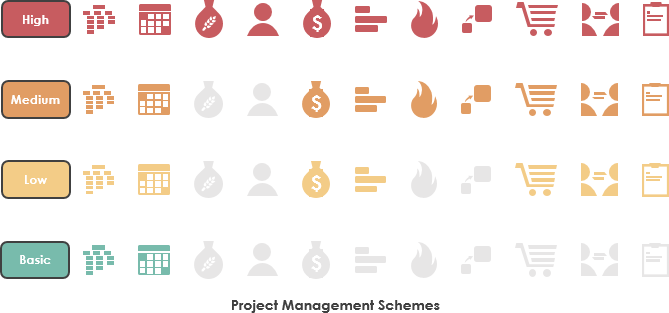
While it's recommended that project manager should choose a scheme based on the result of project complexity assessment, it's up to his/her choice to select the scheme he/she want if deemed beneficial to the success of the project.
Develop Project Charter
Project charter is a document that describes what the project is and how to approach it. It lists the stakeholders, the final deliverables and their acceptance criteria. It's a key document in project management, and the team will refer to it throughout the life cycle of the project. The following sections describe the contents of a typical Project Charter document in detail.
Project Summary
Project Summary provides a description of the project and the business needs it intends to fulfill. It describes the unmet need, demand for services, or opportunity identified underlying the need for an IT project.
Project Summary was provided when developing the Project Proposal in the Identification phase. For more details, please read the page IT Project Management Lifecycle - Identification phase.
Project Risks
Identify the risks to which the project will be exposed.
Project Risks was provided when developing the Project Proposal in the Identification phase, and is confirmed by the Project Manager in this phase. For more details, please read the page IT Project Management Lifecycle - Identification phase.
Customers and Final Deliverables
Identify the person and parties who will benefit from this project, as well as the end product to deliver.
Customers and Final Deliverables were provided when developing the Project Proposal in the Identification phase, and is confirmed by the Project Manager in this phase. For more details, please read the page IT Project Management Lifecycle - Identification phase.
Project Success Criteria
Identify the Project Success Criteria, which are the principles or standards used to determine or judge project success.
Project Success Criteria were provided when developing the Project Proposal in the Identification phase, and is confirmed by the Project Manager in this phase. For more details, please read the page IT Project Management Lifecycle - Identification phase.
Critical Success Factors
Identify the Critical Success Factors of project, which are the factors that must be in place to ensure success of the proposed solution.
Critical Success Factors were provided when developing the Project Proposal in the Identification phase, and is confirmed by the Project Manager in this phase. For more details, please read the page IT Project Management Lifecycle - Identification phase.
Assumptions
Identify the assumptions made in the decision to charter this project. Assumptions are statements taken for granted or accepted as true without proof and made in the absence of fact. There are typically two types of assumptions:
- Functional Assumptions, which relate to the business functionality of the project (e.g., "adequate resources will be made available to manage and maintain the developed system").
- Technical Assumptions, which relate to the technical environment of the project, such as software, hardware, network, servers, and so on (e.g., "the current technical architecture will support the projected number of users of this system").
Major Management Milestones
Identify a list of project management milestones and deliverables. Note that this list is not the same as the products and services provided, but is specific to management of the project. Here is an example:
| Activity | Date | Rationale |
|---|---|---|
| Project Start | 01/05/2017 | N/A |
| Project Proposal Approval | 01/25/2017 | N/A |
| Initiation Phase Start | 02/01/2017 | N/A |
| Planning Phase Start | 03/01/2017 | Must secure the allocation of initial resources |
| Execution Phase Start | 04/01/2017 | N/A |
| Deploy Solution | 06/01/2017 | N/A |
| Project Complete | 06/20/2017 | N/A |
For each milestone, state the date it will happen, and the rationale of your choice, which is the supporting reason for the date being what it is, For example, the dependencies on other projects, funding and other requirements.
Note that a set of preliminary estimated milestones are developed during the project proposal. You can revise the list by editing the estimated date and adding more items.
Stakeholders
Stakeholders are people who actively involved in the project, or whose interests may be affected positively or negatively by execution or completion of the project. They include all persons and organizations involved in a project, or whose interests will be affected by the execution of the project, or the final deliverables.
The figure below shows some of the typical stakeholder, which includes both project team members and other stakeholders. Note that the sponsor may be external or internal to the project manager's organization.
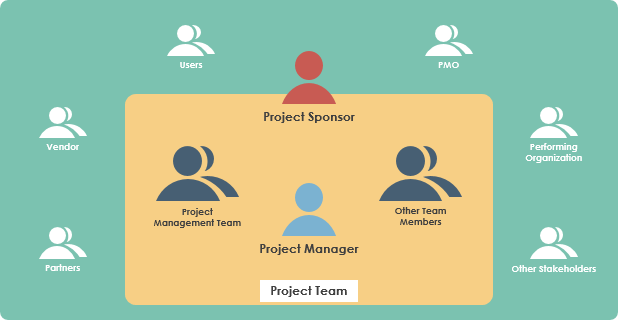
The roles and responsibilities of stakeholders must be clearly defined in any project. Besides roles and responsibilities, you have to list the individuals who take a stakeholder role, and the class of stakeholder.
A class is a classification of the stakeholder, based on the kind and level of involvement he has on the project. Some of the stakeholders may have the power either to block or advance. Some may be interested in knowing what's going on; others may not be so interested. By stating the class, the team can easily see who have the power and the authority to request changes or to stop any initiatives, and who are likely to support an initiative.
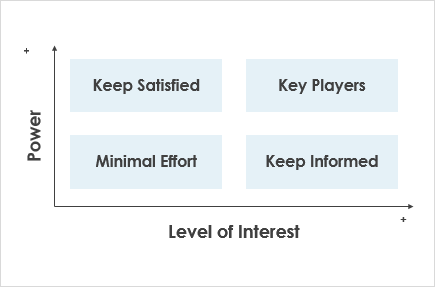
Besides describing stakeholders' roles, capture also the contacts of stakeholders, such as their physical address, mobile phone number, email address, and etc. If someone cannot be reached at a particular time, describe the details in the additional notes column.
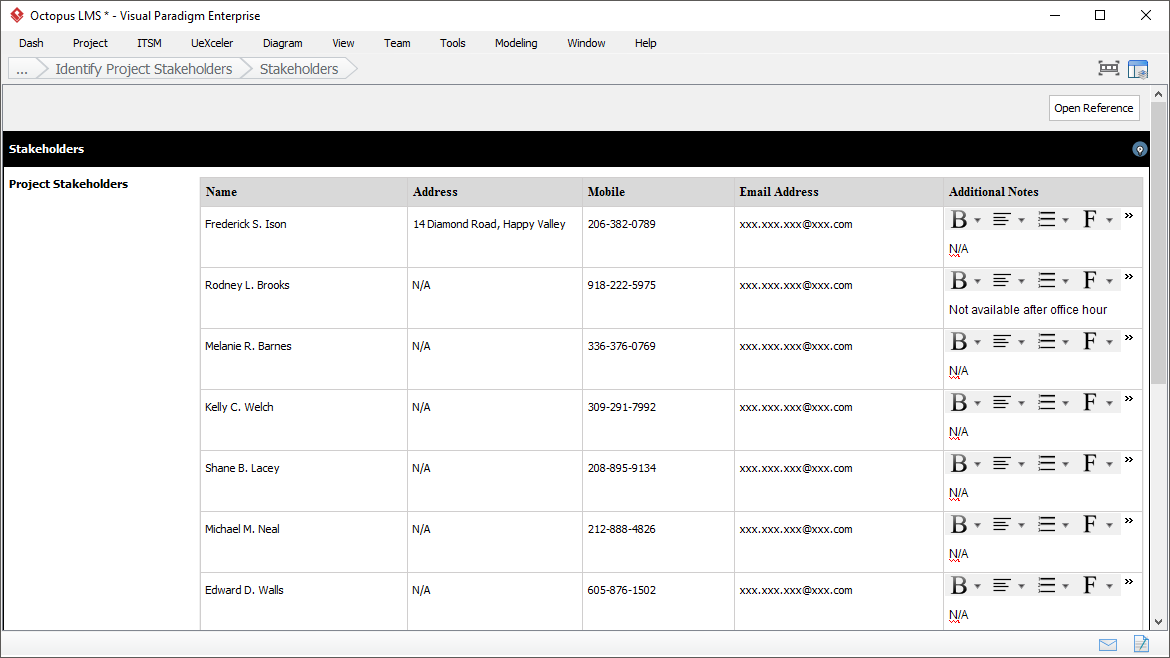
Resource Requirements
Identify the resources that are required to complete the project. Include the amount and the expected source that provides the resource(s). Here are some examples.
- Funding: Estimate the funding required for the project. You may reference the result of cost and benefit analysis performed in the Identification phase.
- Customer Support: Describe how customers will be involved in the project.
- Facilities: Describe the facilities required for project (e.g. conference room, data center)
- Equipment: Describe the hardware needed for the project (e.g. printer, scanner).
- Software Tools: Describe the software requirements for the project (e.g. Microsoft Word, Adobe PDF Reader).
Note that the full scope of resources required to execute a project is usually unclear at this stage, but becomes clear during the Planning phase, which is the next phase. Additional resources may be requested during the project planning.
Project Complexity Assessment
A list of questions and updated answers of the project complexity questionnaire.
Approve of Project Charter
A completed project charter will be approved by the approving authority and project sponsor. Their approval formally empowers the project manager to expend resources on the project and continue with the Planning phase of the project.
